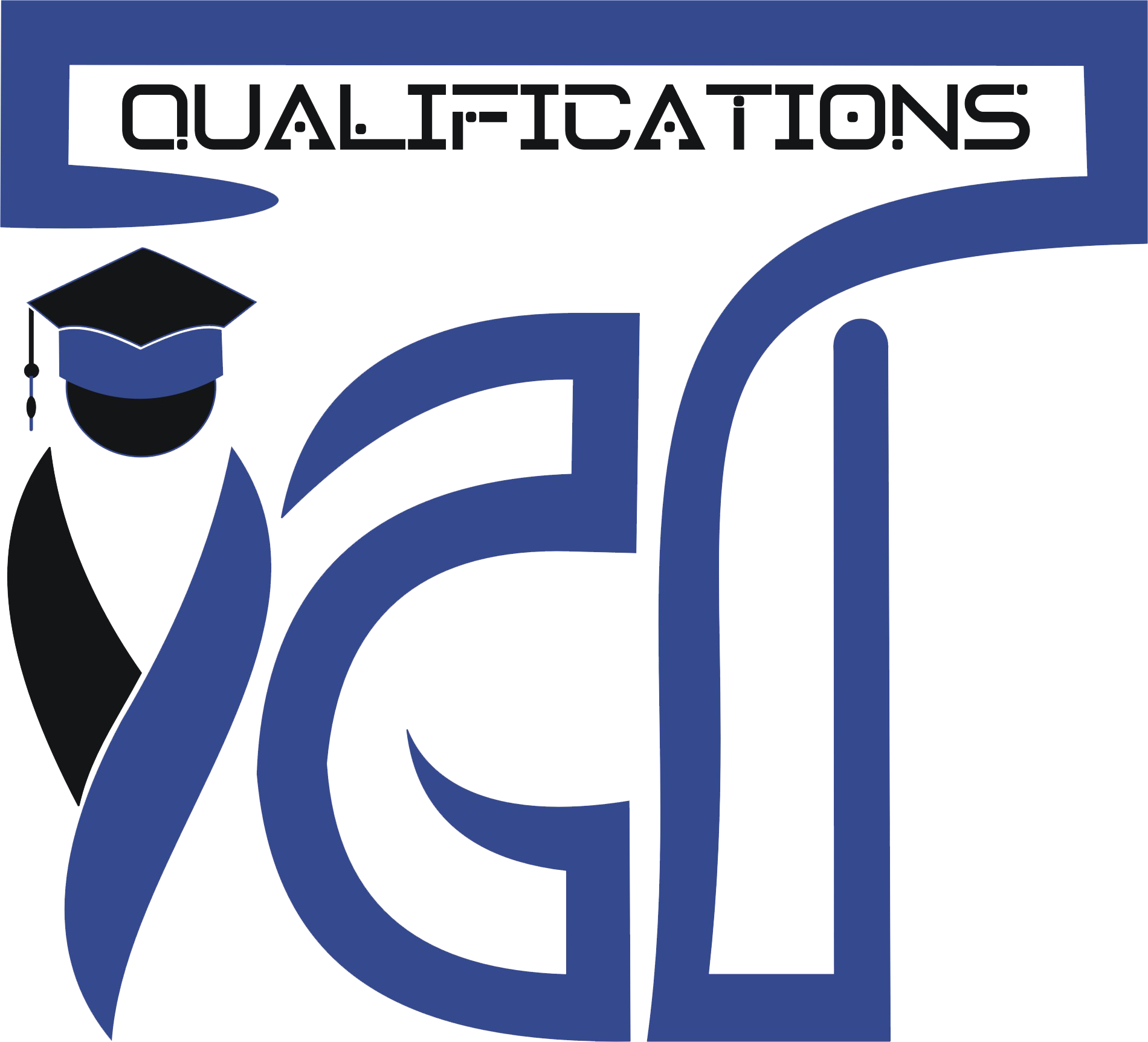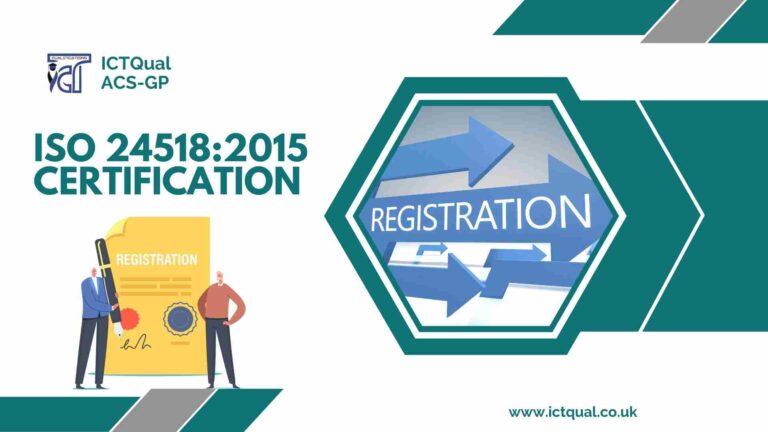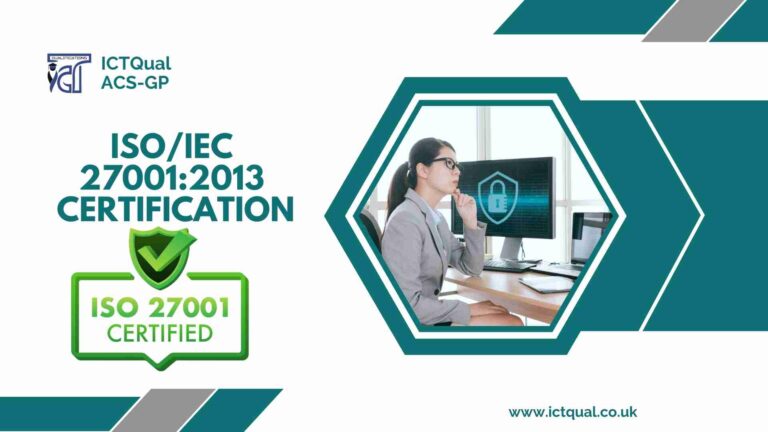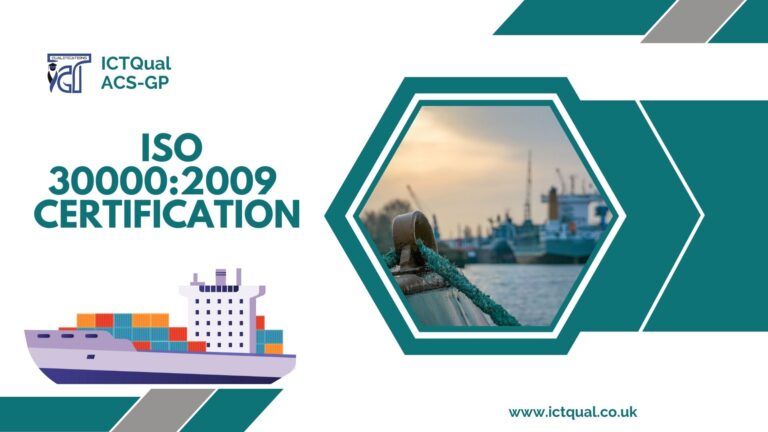Attention business owners! Are you ready to transform your company’s operations and reputation? Achieving ISO 9001:2015 certification is the ultimate secret weapon for building a high-performance business. By implementing a certified Quality Management System, you’ll not only enhance customer satisfaction but also gain a competitive edge in the market. Don’t let your competitors outshine you – take charge and get your business certified today! Our team of experts is ready to guide you through the process and help you achieve ISO 9001:2015 certification with ease. Contact us now and let’s make your business soar!
ICTQual is Exclusive partner of ACS-GP and providing services for company registration with ISO in following ISO Standards
ISO 9001:2015 Certification
ISO 9001:2015 Certification is a globally recognized standard for quality management systems that helps businesses ensure that their products and services meet customer and regulatory requirements while also striving for continuous improvement. Achieving ISO 9001:2015 Certification can be a significant milestone for any business, as it demonstrates a commitment to quality, customer satisfaction, and continuous improvement.
ISO 9001:2015 Certification provides a path to business success by establishing a systematic approach to managing quality. This approach involves identifying and managing risks, establishing clear objectives and goals, and continuously monitoring and improving processes. By implementing a quality management system that meets the requirements of ISO 9001:2015, businesses can streamline their operations, reduce costs, and improve the overall quality of their products and services.
One of the primary benefits of ISO 9001:2015 Certification is that it helps businesses build trust with their customers and stakeholders. By demonstrating that their products and services meet the highest quality standards, businesses can establish a reputation for reliability and professionalism, which can lead to increased customer loyalty and repeat business. ISO 9001:2015 Certification also helps businesses stay competitive by providing a framework for continuous improvement and innovation.
Achieving ISO 9001:2015 Certification requires a significant commitment of time, resources, and effort. Businesses must first assess their current quality management practices and identify areas for improvement. They must then implement changes to their processes, procedures, and policies to meet the requirements of the ISO 9001:2015 standard. Once these changes have been implemented, businesses must undergo a rigorous audit process to demonstrate compliance with the standard.
While achieving ISO 9001:2015 Certification can be a challenging process, the benefits are well worth the effort. By establishing a culture of quality and continuous improvement, businesses can enhance their reputation, improve customer satisfaction, and achieve long-term success. Whether you are a small startup or a large multinational corporation, ISO 9001:2015 Certification can provide a path to business success and help you achieve your goals.
Understanding the basics of ISO 9001:2015
ISO 9001:2015 is a globally recognized standard for quality management systems (QMS). It outlines a set of requirements for organizations to establish, implement, maintain, and continually improve their quality management system. The standard is designed to help companies meet customer needs and expectations while also improving efficiency and reducing waste.
Overview of the standard:
The ISO 9001:2015 standard is structured around a set of ten clauses that outline the requirements for a quality management system. These clauses cover a range of topics, including:
- Scope: defines the scope of the quality management system, including the products and services that are covered.
- Normative references: lists any other standards or regulations that must be followed.
- Terms and definitions: provides definitions for key terms used throughout the standard.
- Context of the organization: requires companies to identify their internal and external context and the factors that may impact their quality management system.
- Leadership: outlines the requirements for top management to demonstrate leadership and commitment to the quality management system.
- Planning: requires companies to plan their quality management system and identify risks and opportunities.
- Support: covers the resources and support needed to implement and maintain the quality management system, including training and documentation.
- Operation: outlines the requirements for product and service delivery, including design and development, purchasing, and production.
- Performance evaluation: covers the monitoring, measurement, analysis, and evaluation of the quality management system.
- Improvement: requires companies to continually improve their quality management system through corrective actions and ongoing reviews.
Key concepts and principles:
The ISO 9001:2015 standard is built around several key concepts and principles, including:
- Customer focus: the standard places a strong emphasis on meeting customer needs and expectations.
- Leadership: top management must demonstrate leadership and commitment to the quality management system.
- Process approach: the standard requires companies to view their operations as a series of interconnected processes.
- Continual improvement: companies must continually improve their quality management system to meet changing customer needs and expectations.
- Evidence-based decision making: companies must make decisions based on data and evidence.
Benefits of ISO 9001:2015 certification:
ISO 9001:2015 certification can provide a range of benefits for companies, including:
- Improved customer satisfaction: by meeting customer needs and expectations, companies can improve customer satisfaction.
- Increased efficiency: the standard can help companies identify and eliminate waste, improving efficiency and reducing costs.
- Competitive advantage: certification can differentiate a company from its competitors and provide a competitive advantage.
- Better risk management: the standard requires companies to identify and mitigate risks, reducing the likelihood of problems.
- Improved supplier relationships: by requiring suppliers to meet the same quality standards, companies can improve supplier relationships and ensure consistent quality.
Understanding the basics of ISO 9001:2015 can provide companies with a framework for improving their quality management system and meeting customer needs and expectations. By implementing the requirements of the standard and achieving certification, companies can improve efficiency, reduce waste, and gain a competitive advantage in their industry.
Developing a quality management system (QMS)
A Quality Management System (QMS) is the backbone of any ISO 9001:2015 certification process. It provides a framework for managing quality throughout an organization and ensures that customer expectations are met consistently. Here are the key steps involved in developing a QMS:
- Identify the scope of the QMS: Determine the boundaries and applicability of the QMS to the organization, including the products and services offered and the processes used to deliver them.
- Establish quality objectives and policies: Develop a set of measurable objectives that align with the organization’s strategic goals and define policies that reflect the organization’s commitment to quality.
- Identify and manage risks and opportunities: Assess the risks and opportunities that affect the QMS, and develop a plan to address them. This includes identifying potential failures, determining their impact, and implementing actions to mitigate or eliminate them.
- Define roles and responsibilities: Identify the roles and responsibilities for all personnel involved in the QMS, including top management, process owners, and employees.
- Document procedures and processes: Develop procedures and processes that define how the QMS will operate, including how the organization will control documents, perform audits, and manage nonconformities.
- Implement corrective and preventive actions: Develop a system for identifying and correcting nonconformities, and establish procedures for implementing preventive actions to eliminate the causes of nonconformities.
By following these steps, an organization can develop a robust QMS that meets the requirements of ISO 9001:2015.
Establishing Quality Objectives and Policies:
To achieve ISO 9001:2015 certification, an organization must establish quality objectives and policies that reflect its commitment to meeting customer expectations. Quality objectives should be measurable, relevant, and aligned with the organization’s strategic goals. Quality policies should reflect the organization’s commitment to quality and provide a framework for achieving its objectives.
Identifying and Managing Risks and Opportunities:
ISO 9001:2015 requires organizations to identify and manage risks and opportunities that affect the QMS. This includes assessing risks associated with product and service delivery, determining their potential impact, and implementing actions to mitigate or eliminate them. By managing risks and opportunities effectively, organizations can improve their ability to meet customer expectations and enhance their overall performance.
Defining Roles and Responsibilities:
ISO 9001:2015 requires organizations to define the roles and responsibilities for all personnel involved in the QMS. This includes top management, process owners, and employees. By defining roles and responsibilities, organizations can ensure that everyone understands their contribution to the QMS and is accountable for its success.
Documenting Procedures and Processes:
ISO 9001:2015 requires organizations to develop procedures and processes that define how the QMS will operate. This includes how the organization will control documents, perform audits, and manage nonconformities. By documenting procedures and processes, organizations can ensure that the QMS is implemented consistently and effectively.
Implementing Corrective and Preventive Actions:
ISO 9001:2015 requires organizations to develop a system for identifying and correcting nonconformities and establishing procedures for implementing preventive actions to eliminate the causes of nonconformities. By implementing corrective and preventive actions, organizations can improve their ability to meet customer expectations and enhance their overall performance.
Developing a QMS that meets the requirements of ISO 9001:2015 is a critical step in achieving certification. By establishing quality objectives and policies, identifying and managing risks and opportunities, defining roles and responsibilities, documenting procedures and processes, and implementing corrective and preventive actions, organizations can enhance their credibility and reputation while improving their overall performance.
Preparing for the certification audit
Preparing for ISO 9001:2015 certification requires careful planning and preparation. This includes selecting a certification body, conducting internal audits, and addressing any non-conformities identified during the audit process. In this article, we will explore each of these topics in detail.
Selecting a Certification Body:
When selecting a certification body, it is important to choose an accredited organization that is recognized by the International Accreditation Forum (IAF). Look for a certification body with experience in your industry and a reputation for providing high-quality audits. Consider their fees and the level of support they provide throughout the certification process.
Preparing for the Certification Audit:
Before the certification audit, it is essential to ensure that your quality management system (QMS) is fully implemented and meets the requirements of the ISO 9001:2015 standard. This includes conducting internal audits to identify any non-conformities and implementing corrective actions to address them. Make sure that your employees are trained on the QMS and are prepared to answer questions during the audit.
Conducting Internal Audits:
Internal audits are a crucial part of the ISO 9001:2015 certification process. They help identify any areas of non-compliance or opportunities for improvement in your QMS. Conduct internal audits regularly and ensure that the auditors are trained and competent in conducting audits. Document the results of the audits and implement corrective actions to address any non-conformities identified.
Addressing Non-Conformities:
If non-conformities are identified during the certification audit, it is important to address them promptly and effectively. Develop a corrective action plan that addresses the root cause of the non-conformity and implements measures to prevent recurrence. Implement the corrective actions and document the results. The certification body will verify that the non-conformities have been addressed before issuing certification.
Preparing for the ISO 9001:2015 certification audit requires careful planning and preparation. Selecting the right certification body, preparing for the audit, conducting internal audits, and addressing non-conformities are all essential steps in achieving certification. By following these steps, you can ensure that your QMS meets the requirements of the ISO 9001:2015 standard and gain a competitive advantage in your industry.
Maintaining ISO 9001:2015 Certification
Maintaining ISO 9001:2015 Certification: Best Practices for Continual Improvement
Once you have achieved ISO 9001:2015 certification for your company’s quality management system (QMS), it’s important to maintain your certification through continual improvement and monitoring. Here are some best practices for maintaining your ISO 9001:2015 certification:
Continual Improvement and Monitoring:
ISO 9001:2015 places a strong emphasis on continual improvement of your QMS. This means regularly reviewing your processes and procedures, and making changes where necessary to improve efficiency, effectiveness, and customer satisfaction. Consider setting up a system for collecting and analyzing feedback from customers, employees, and other stakeholders, and use this feedback to drive improvements in your QMS.
Updating the QMS:
It’s important to keep your QMS up-to-date with changes in your business and industry. This may involve revising your policies and procedures, adding new processes or controls, or updating your quality objectives. Make sure to document any changes to your QMS and communicate these changes to your employees to ensure they are implemented effectively.
Conducting Management Reviews:
ISO 9001:2015 requires top management to review the QMS regularly to ensure it remains effective and aligned with the organization’s objectives. Use these reviews as an opportunity to assess the performance of your QMS, identify areas for improvement, and set new quality objectives. Make sure to document the results of these reviews and use them to drive continual improvement in your QMS.
Preparing for Recertification Audits:
ISO 9001:2015 certification is valid for three years, after which time you will need to undergo a recertification audit to maintain your certification. To prepare for these audits, continue to monitor and improve your QMS, and keep your documentation up-to-date. Make sure to schedule the audit well in advance and ensure that your QMS is ready for inspection.
Maintaining your ISO 9001:2015 certification requires a commitment to continual improvement and monitoring of your QMS. By following the best practices outlined above, you can ensure that your QMS remains effective and aligned with your business objectives, and maintain your certification for years to come.
Procedure for Company registration with ISO 9001
General procedure to register a company with ISO 9001:
- Conduct a Gap Analysis: The first step is to conduct a gap analysis to determine the areas where the company needs to improve to meet the ISO 9001 requirements. The gap analysis will help identify areas where the company needs to develop or modify processes and procedures to comply with the standard.
- Develop a Quality Management System (QMS): Once the gaps are identified, the company needs to develop a QMS that meets the requirements of the ISO 9001 standard. The QMS should include policies, procedures, and work instructions that outline the processes and controls required to meet the standard.
- Implement the QMS: Once the QMS is developed, it needs to be implemented throughout the organization. This may involve training employees on the new processes and procedures, and ensuring that all employees are aware of their roles and responsibilities in the QMS.
- Internal Audit: After the QMS is implemented, the company needs to conduct an internal audit to ensure that the QMS is effective and compliant with the ISO 9001 standard. The internal audit should be conducted by qualified auditors who are independent of the area being audited.
- Management Review: The results of the internal audit should be presented to top management for review. The management review should include an evaluation of the QMS’s performance and effectiveness, and determine if any corrective action is necessary.
- Certification Audit: Once the QMS has been in place for a period of time, the company can schedule a certification audit with an accredited certification body. The certification audit will verify that the company’s QMS meets the requirements of the ISO 9001 standard.
- Recertification: ISO 9001 certification is valid for a period of three years. During this time, the company needs to maintain the QMS and ensure that it continues to meet the ISO 9001 requirements. The company will need to undergo a recertification audit after the three-year period to maintain its ISO 9001 certification.
Conclusion
In conclusion, obtaining ISO 9001 certification can be a significant milestone for any business looking to improve its operations, enhance customer satisfaction, and gain a competitive edge in the market. With a well-documented QMS in place and a commitment to continuous improvement, your business can achieve ISO 9001 certification and reap the benefits of increased credibility, efficiency, and profitability. Don’t wait any longer, take the first step towards ISO 9001 certification today and watch your business thrive!
ICTQual is Exclusive partner of ACS-GP and providing services for company registration with ISO in following ISO Standards







